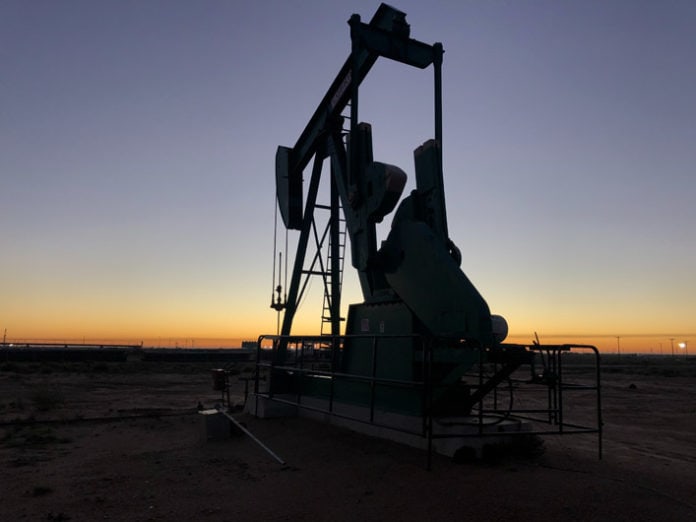Conventional production leaves a lot of oil in the ground.
However, there are ways to increase oil recovery rates from the reservoir.
Enhanced oil recovery (EOR) is often performed on wells where production is falling while there is still a lot of oil trapped underground.
Related: What Do Reservoir Engineers Do?
Three Types of Reservoir Recovery
Primary Recovery
This is a conventional oil recovery driven mainly by reservoir pressure.
It is the cheapest option and there is no need to drill injection wells or pump anything into the formation – the reservoir is producing on its own without any outside help.
Secondary Recovery
After primary production starts to decline due to a drop in reservoir pressure, methods such as water flooding and gas injection are used.
These fluids are injected into the injection well to energize the reservoir and improve production rates by pushing oil toward a producing well.
Tertiary Recovery (EOR)
Tertiary recovery methods are often more complex and involve using chemicals or heat to increase the production from the reservoir even further.
The goal of EOR is to make oil in the formation more mobile and easier to move towards a producing well.
This is achieved either by injecting chemicals that change oil properties or using temperature to decrease oil viscosity.
Sometimes tertiary and secondary methods are combined to improve the efficiency of the water flooding or gas injection.
For example, polymers and surfactants might be added to the fluid used in water flooding to increase the sweeping efficiency of the flood.
Profit analysis is often important when deciding if EOR or even secondary recovery methods should be utilized.
EOR is usually more expensive than water or gas flooding.
Related: How Is Natural Gas Formed?
Common Examples of EOR Methods
CO2 Injection
In this method, liquid CO2 is injected into the formation to lower the viscosity of the oil and increase its mobility.
This can also be a great way to get rid of CO2 by trapping it underground.
Polymer Flooding
This method helps to increase sweep efficiency by increasing the viscosity of the fluid used for water flooding.
Surfactant Injection
Various surfactants are injected to increase the mobility of oil in the formation.
Surfactants help to lower interfacial tension and improve production by allowing oil to move more freely.
Often surfactants are used to increase the efficiency of water flooding or polymer flooding.
Microbial Injection
Injecting specially selected microbes into the formation.
These microbes can create natural surfactants that increase the mobility of the oil in the formation.
Bacteria can also be used to break down paraffin deposits that might obstruct the flow of oil.
Related: Artificial Lift Methods Used to Get Oil to Surface
Thermal Enhanced Oil Recovery
Thermal methods are often used for oil production from oil sands.
The most common method is Steam Assisted Gravity Drainage (SAGD).
It is performed by drilling two horizontal wells parallel to each other.
The steam is injected into the upper well to decrease the viscosity of the bitumen and allow it to flow into the lower well.
Another method is Cyclic Steam Stimulation (CSS) where only one well is drilled into oil sand formation and steam is injected to soften bitumen around the well.
After that, the well is put on production until rates drop and steam injection is performed again.
Read next: How Is Oil Extracted From Oil Sands?
What is the Difference Between Enhanced Oil Recovery and Fracking?
Fracking is not EOR.
Hydraulic fracturing is performed after drilling the wells in tight formations such as shale.
The mixture of sand and fluid is pumped into the well to create fractures in the formation to allow hydrocarbons to flow more easily into the wellbore.
EOR, on the other hand, is often performed after the well was already producing for a while and it has to do with pushing the oil from the formation into the wellbore or making it easier to flow by altering its properties.
Read next: Advantages and Disadvantages of Hydraulic Fracturing
